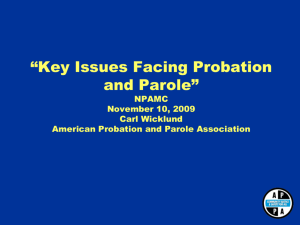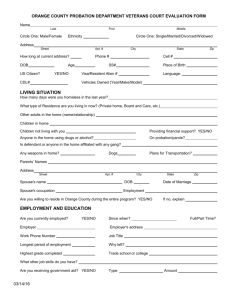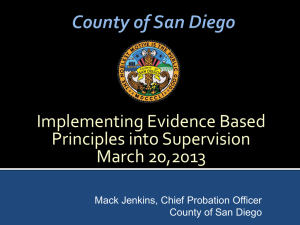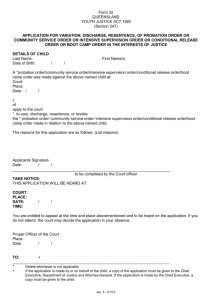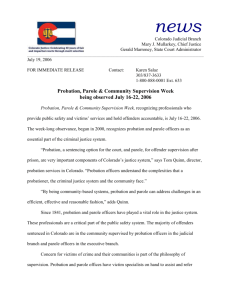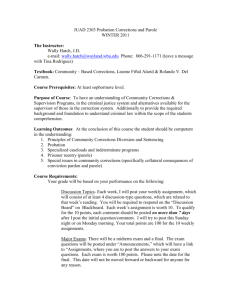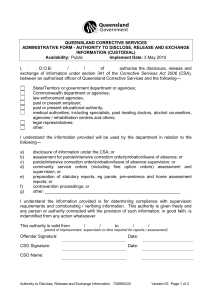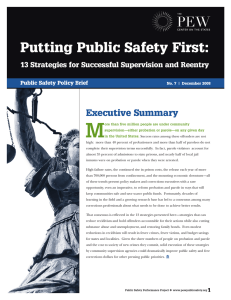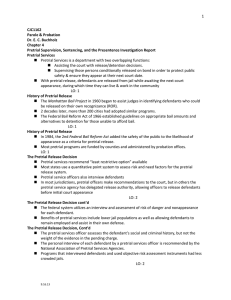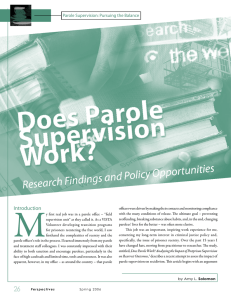Pretrial, Probation and Parole in the United States Your presenter
advertisement
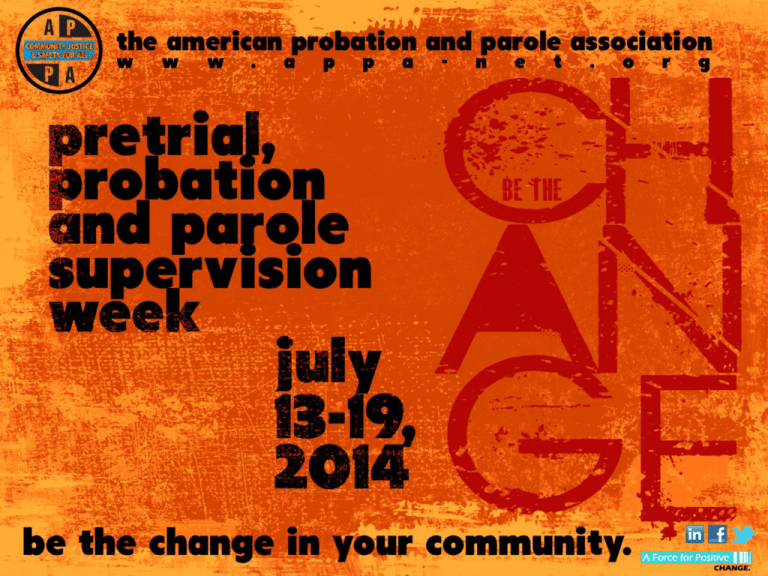
Pretrial, Probation and Parole in the United States Your presenter: Purpose: • • • • • Define pretrial, probation and parole Provide information on the criminal justice process Describe community supervision strategies Provide national statistics Discuss current trends in community supervision What is pretrial supervision? Pretrial programs generally perform three primary functions, (1) collect and analyze defendant information for use in determining risk, (2) to make recommendations to the court concerning conditions of release, and (3) to supervise defendants who are released from secure custody during the pretrial phase. Probation: an American innovation • 1841 – John Augustus, the “Father of Probation” • Term derived from the Latin probatio meaning a period of proving or trial • The most common form of criminal sentence or juvenile disposition in the U.S. Definition: Probation • A court order • Places the offender under the supervision and care of a probation officer • Generally in lieu of incarceration as long as the probationer meets certain standards of conduct Definition: Parole • • • Term of conditional supervised release following a prison term Prisoners may be released to parole either by a parole board decision or by mandatory conditional release Parolee may be returned to prison for rule violations or other offenses Incarceration vs. Community Supervision 33 surveyed states had an average of about $79 per inmate per day—or almost $29,000 per year per person for prison inmates. In contrast, the average daily costs for managing an offender in the community in these states ranged from $3.42 per day for probationers to $7.47 per day for parolees or about $1,250 to $2,750 a year, respectively. ₁ 1 One in 31: The Long Reach of American Corrections, Pew Center on the States, Washington, DC, March 2009. The typical process of probation and parole Probation • Court hearing and finding of guilt • Pre-sentence investigation • Assessment • Case planning • Supervision Parole • • • • • Pre-parole investigation Parole hearing Assessment Case planning Supervision Elements of community supervision Monitoring Intervening Advocacy Referrals Monitoring: Compliance with conditions of supervision Drug testing Electronic monitoring Monetary obligations Job performance Illicit materials Computer use Community service Victim safety Intervention • • • • • • • Crisis involvement Counseling Graduated responses Substance abuse treatment Job training Relapse Family/Social supports Advocacy Treatment Education/Employment Training Budgets Community Referrals • Knowledge of community resources • Access to resources • Communication, coordination and collaboration with other agencies U.S. adults under community supervision Total on community corrections(estimated): 4,793,934 Probation: 3,942,776 Parole: 851,158 ₂ About 6,937,600 offenders were under the supervision of adult correctional systems at yearend 2012, declining by about 51,000 offenders during the year. 2 Probation and Parole in the United States, 2012, Bureau of Justice Statistics, Washington, DC, November 2013. 3 http://bjs.gov/content/pub/pdf/cpus12.pdf, Bureau of Justice Statistics, Washington, DC, December 2013 Trends in community supervision • • • • • • • Growth of population under supervision Collaboration and partnerships Results-driven management Re-emergence of rehabilitation Specialization of caseloads Technology Community justice Questions?

